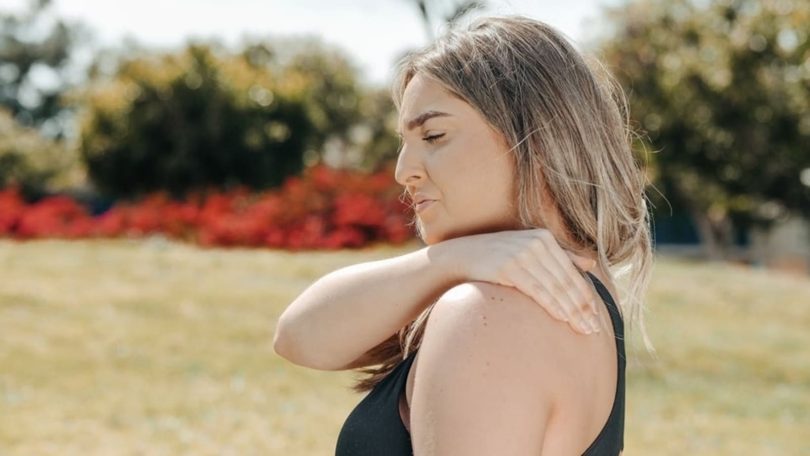[ad_1]
Zarafshan Shiraz, New Delhi
Shoulder pain has often always been labelled as a frozen shoulder and this incorrect diagnosis is the reason why shoulder pain becomes long-standing and the standard approach to its treatment fails. However, let’s try and understand here that not all shoulder pain is due to a frozen shoulder.

Causes:
In an interview with HT Lifestyle, Dr Chintan Desai, MS Ortho, Shoulder Surgeon (USA, Australia, Korea, Portugal), shared, “There are times when the shoulder is painful but the problem is elsewhere that is a heart attack which is chest pain that radiates to the left shoulder, cervical spondylosis which is neck pain that radiates to the shoulder and arm and is associated with tingling numbness. Gallbladder inflammation means the irritation of the diaphragm due to an inflamed gallbladder radiates to the right shoulder.”
According to him, following are the causes of shoulder pain and restriction of shoulder movements where the problem is in the shoulder itself. The shoulder joint is made up of the ball and socket joint, the capsule and the rotator cuff muscles and tendons. Conditions affecting any of these structures cause shoulder pain.
• Adhesive capsulitis or frozen shoulder
• Shoulder Dislocations
• Rotator cuff Tendonitis or tendon inflammation • Rotator cuff tears
• Shoulder joint arthritis
Treatment:
Dr Chintan Desai insisted that the first step towards treatment is to understand the cause of pain. Clinical examinations and investigations like X-rays and MRIs help us get an accurate diagnosis. He recommended:
- Frozen shoulder or adhesive capsulitis – This is a common cause of pain for the 40 – 60-year-old age group. These patients also have associated diabetes or hypothyroidism. The reason for stiffness is a thickening of the capsule. The muscles and labrum structure are normal in MRI. It is only then that a diagnosis of a frozen shoulder is confirmed. Traditional treatment in the form of physiotherapy and medication is time-consuming and takes up to 2 years for the shoulder movements to return. The latest and most successful treatment is keyhole surgery. The thickened capsule is released. The advantage is that the movements return in 1 week and strength in 1 month.
- Shoulder dislocation – In a patient with shoulder dislocation, the ball slips out of the socket. This is an emergency when it happens and requires immediate treatment to put the ball back into the socket. However, this is not the final treatment. Once the shoulder dislocates it causes a tear in the labrum (meniscus-like tissue in the shoulder). Hence the shoulder always remains unstable and has a 90 percent chance of repeat dislocation. This condition can be permanently solved today with surgery. There are several procedures described in studies, however, the latest treatment that gives the best results where the dislocations stop and the movements return normally are the following. Most patients return to the sport after this treatment.
- Shoulder arthroscopy and Bankart repair – This is the latest keyhole surgery technique to repair the torn labrum after a dislocation. This is most successful if done early after the first dislocation when the quality of the labrum is good.
- Latarjet – This is the most successful operation in patients with recurrent dislocations and high-demand athletes like wrestlers or kabaddi players. This involves transferring a small piece of bone to the front of the socket.
- Rotator cuff tendonitis/inflammation – The rotator cuffs are 4 muscles and tendons in the shoulder and this is the commonest cause of shoulder pain. The overhead movements are painful. The best way to treat it is with an Ultrasound guided injection to allow the medicine to be delivered exactly to the inflamed tissues. Physiotherapy is recommended after the injection to improve strength.
- Rotator cuff tendon tears – Tendon tears cause significant shoulder dysfunction. They occur after an injury like lifting weight or after falls. They may also be age-related wear and tear. Complete tears and >50 % partial thickness tears are best treated by a keyhole surgery called arthroscopic rotator cuff repair. The results are excellent if done early. If these tears are left alone, they worsen and the quality of the tissue deteriorates with time. This is when shoulder joint wear and tear begins and this condition is called rotator cuff tear arthritis. Once a patient reaches this stage of the disease, the only option is shoulder replacement.
- Shoulder arthritis – A patient who is over 60 years of age with a painful and stiff shoulder should be investigated for shoulder joint arthritis. Shoulder replacements are the only way to permanently treat a worn-out joint. Shoulder arthritis or wear and tear is of 2 types that are Arthritis with normal muscles and tendons and arthritis with torn muscles and tendons. The material or implant required for a successful surgery is different for these 2 types of arthritis. Anatomical shoulder replacements mean the ball is replaced with a ball and the socket with a socket is used for patients with worn-out joints but have normal muscles and tendons. Stemless shoulder replacements are a type of anatomical shoulder replacement with a smaller implant to preserve native bone. Reverse shoulder replacements are the latest advance in shoulder replacement technology. A reverse shoulder means a ball is implanted in the socket and a socket at the ball side of the joint. This reverses the geometry of the shoulder joint. This is required to bring back function in a patient joint who has arthritis and torn rotator cuff tendons.
Timely treatment can help you to get rid of the shoulder pain and improve shoulder movement and quality of life. Do not delay treatment at all.
[ad_2]
Source link








